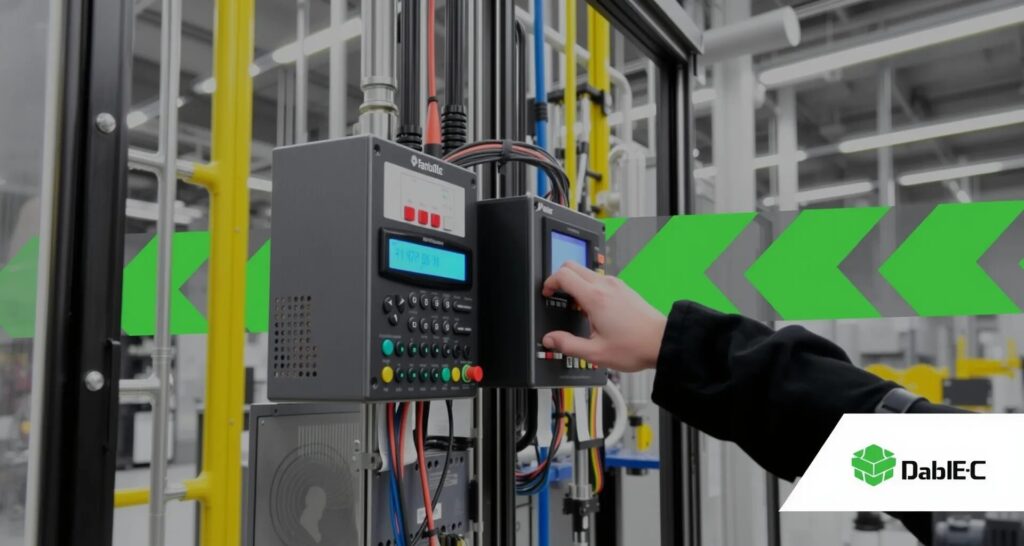
How Olis Robotics’ New PLC Capabilities Are Revolutionizing Industrial Automation
Olis Robotics has taken a significant leap forward with its latest advancements in Programmable Logic Controller (PLC) capabilities. These innovations are not just incremental upgrades but pivotal enhancements that are poised to transform how industries operate.
Bridging the Gap Between Robotics and PLC Systems
One of the most significant challenges in industrial automation has been the integration of robotics with existing PLC systems. Traditionally, this integration required complex programming and significant human intervention, which often led to inefficiencies and increased costs. Olis Robotics has tackled this challenge head-on by enhancing its software to seamlessly integrate with PLC systems. This integration allows for more intuitive control, reducing the need for specialized knowledge and making automation more accessible across various industries.
Enhanced Flexibility and Customization
The new PLC capabilities offer unprecedented flexibility in industrial automation. With these advancements, companies can now easily customize automation processes to meet specific operational needs. This means that production lines can be quickly adjusted to accommodate different products, reducing downtime and improving overall efficiency. The ability to tailor automation processes without extensive reprogramming is a game-changer for industries that require agility and adaptability.
Real-Time Monitoring and Diagnostics
Another standout feature of Olis Robotics’ new PLC capabilities is the real-time monitoring and diagnostic tools integrated into the system. These tools provide operators with a comprehensive view of the entire automation process, allowing them to identify potential issues before they escalate into significant problems. The result is a reduction in unplanned downtime, lower maintenance costs, and an overall improvement in operational efficiency.

Simplified Human-Machine Interaction
Human-machine interaction is crucial in industrial automation, and Olis Robotics has made significant strides in simplifying this interaction. The enhanced PLC capabilities include a more user-friendly interface that allows operators to interact with automation systems more intuitively. This simplification reduces the learning curve for new operators and ensures that even those with limited technical expertise can effectively manage and control complex automation systems.
Improved Safety Standards
Safety is a paramount concern in any industrial environment. The new PLC capabilities introduced by Olis Robotics include advanced safety features that help prevent accidents and ensure compliance with industry standards. These features include automated safety checks, real-time alerts, and enhanced emergency stop functionalities, all of which contribute to a safer working environment.
Cost-Effective Solutions
Investing in automation can be a costly endeavor, but Olis Robotics is helping companies maximize their return on investment with these new PLC capabilities. The improved integration and ease of use mean that companies can implement automation without needing to overhaul their entire system. This cost-effective approach allows businesses to gradually enhance their automation processes, spreading out expenses and minimizing financial risk.
Future-Proofing Automation Systems
In the fast-paced world of industrial automation, staying ahead of the curve is essential. The PLC capabilities introduced by Olis Robotics are designed with the future in mind. They are highly scalable, ensuring that as businesses grow and their automation needs evolve, their systems can adapt accordingly. This future-proofing aspect ensures that companies can remain competitive without constantly needing to invest in new technologies.
Reducing Environmental Impact
Sustainability is becoming increasingly important in industrial processes, and automation plays a crucial role in reducing a company’s environmental footprint. The enhanced PLC capabilities allow for more precise control over processes, leading to less waste and more efficient use of resources. This not only helps companies meet environmental regulations but also supports their corporate social responsibility goals.
Streamlining Maintenance and Support
Maintenance is often a significant challenge in industrial automation, but the new PLC capabilities from Olis Robotics offer a more streamlined approach. With predictive maintenance features and easy-to-use support tools, companies can reduce the time and resources spent on maintaining their automation systems. This proactive approach to maintenance helps prevent costly breakdowns and extends the lifespan of equipment.
Case Studies: How Olis Robotics’ PLC Capabilities Are Transforming Industries
Case Study 1: Automotive Manufacturing – Enhancing Flexibility and Reducing Downtime
Challenge: An automotive manufacturer faced significant challenges in adapting their production lines to accommodate multiple vehicle models. The existing automation setup required extensive reprogramming whenever a new model was introduced, leading to costly downtime and delays.
Solution: By integrating Olis Robotics’ advanced PLC capabilities, the manufacturer was able to automate the reconfiguration of their production lines. The enhanced flexibility allowed them to switch between different models with minimal intervention, significantly reducing downtime.
Results:
- 30% reduction in production line changeover time.
- 20% increase in overall production efficiency.
- Significant cost savings from reduced downtime and less need for manual intervention.
Case Study 2: Food and Beverage Industry – Improving Safety and Compliance
Challenge: A leading food processing company needed to improve safety standards across their automated production lines. The existing system was prone to errors that could potentially lead to contamination or safety hazards.
Solution: Olis Robotics introduced their PLC system with built-in real-time monitoring and automated safety checks. The system provided operators with immediate alerts in case of anomalies, ensuring quick corrective actions and compliance with stringent industry regulations.
Results:
- 50% reduction in safety-related incidents.
- Improved compliance with food safety standards, leading to a 10% decrease in insurance premiums.
- Enhanced trust and reliability in their production processes.
Case Study 3: Electronics Manufacturing – Streamlining Maintenance and Support
Challenge: An electronics manufacturer was struggling with frequent breakdowns in their automated assembly lines, leading to production delays and increased maintenance costs. The traditional maintenance approach was reactive, often addressing issues only after they caused significant disruptions.
Solution: By implementing Olis Robotics’ PLC capabilities, the manufacturer was able to adopt a predictive maintenance strategy. The system’s diagnostic tools and predictive alerts allowed them to anticipate potential failures and schedule maintenance before issues became critical.
Results:
- 40% reduction in unexpected equipment breakdowns.
- 25% increase in equipment lifespan due to proactive maintenance.
- Reduced maintenance costs and improved production uptime.
Case Study 4: Pharmaceutical Industry – Achieving Precision and Reducing Waste
Challenge: A pharmaceutical company needed to achieve precise control over their automated production process to reduce waste and ensure consistent product quality. Variations in the process were leading to material wastage and compromised quality.
Solution: Olis Robotics’ PLC capabilities provided the company with the ability to finely tune their production process. The system’s real-time adjustments and precision controls ensured that every batch met the exact specifications required.
Results:
- 15% reduction in material waste.
- Consistent product quality, with a 25% decrease in rejected batches.
- Improved regulatory compliance and customer satisfaction.
Case Study 5: Aerospace Industry – Future-Proofing Automation Systems
Challenge: An aerospace manufacturer required a scalable automation solution that could grow with their business and adapt to new, more complex production requirements over time.
Solution: The company implemented Olis Robotics’ PLC system, which was designed to be highly scalable. As the company’s needs evolved, they were able to easily upgrade their automation system without the need for a complete overhaul.
Results:
- Scalability allowed for seamless integration of new processes as the business expanded.
- 10% reduction in costs associated with system upgrades and reconfiguration.
- Enhanced ability to innovate and stay competitive in the industry.
Conclusion: A New Era in Industrial Automation
The new PLC capabilities introduced by Olis Robotics represent a monumental step forward in industrial automation. By improving flexibility, enhancing safety, and simplifying integration, these advancements are poised to revolutionize how industries operate. Companies that adopt these new capabilities can expect to see significant improvements in efficiency, cost savings, and overall productivity.
In a world where automation is becoming increasingly essential, Olis Robotics is leading the charge with innovations that not only meet the current demands of industry but also set the stage for the future.
For more in-depth information about Olis Robotics and their innovative solutions, you can explore their offerings and case studies [here].





